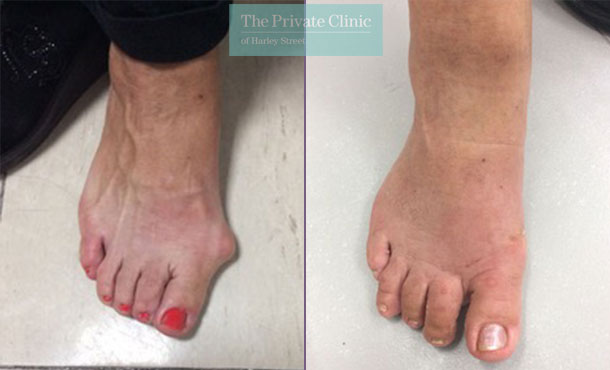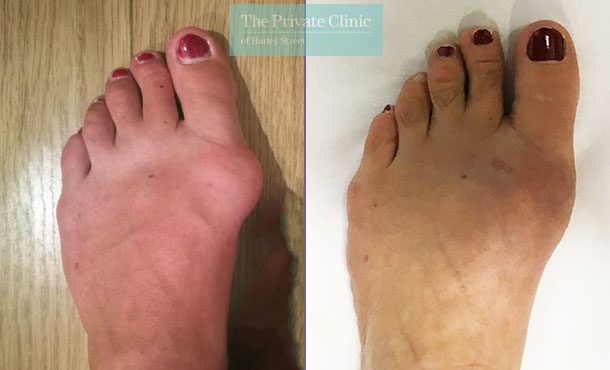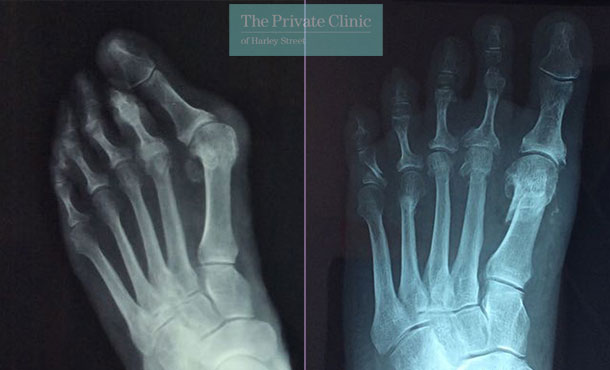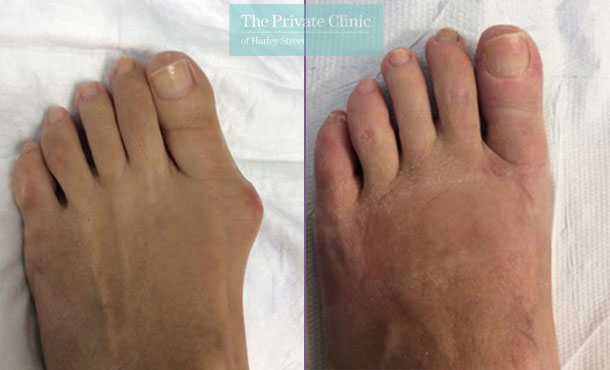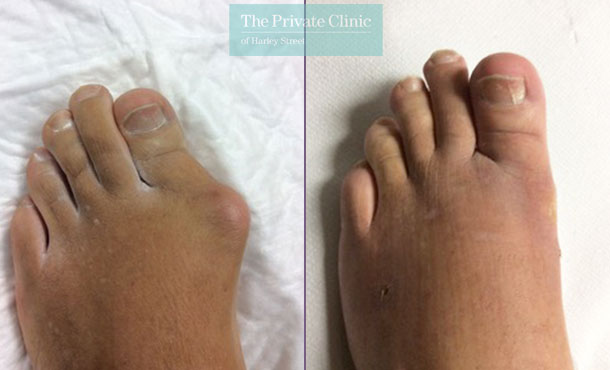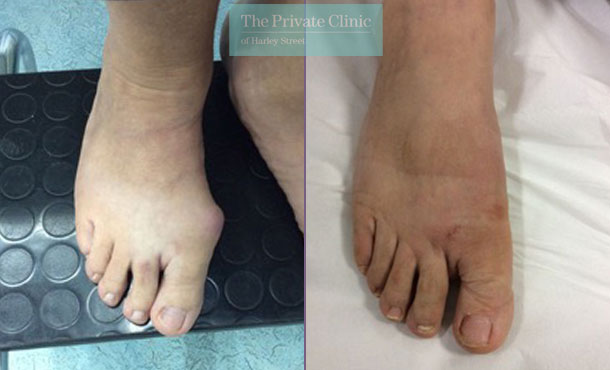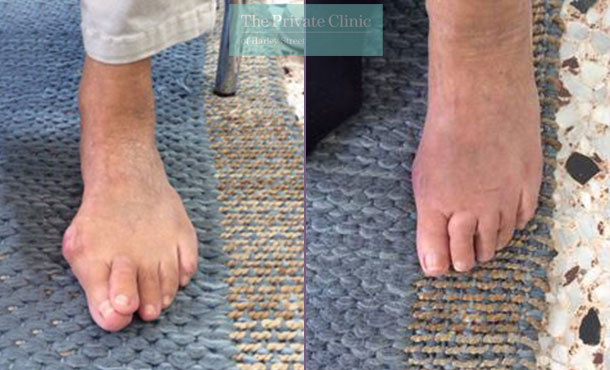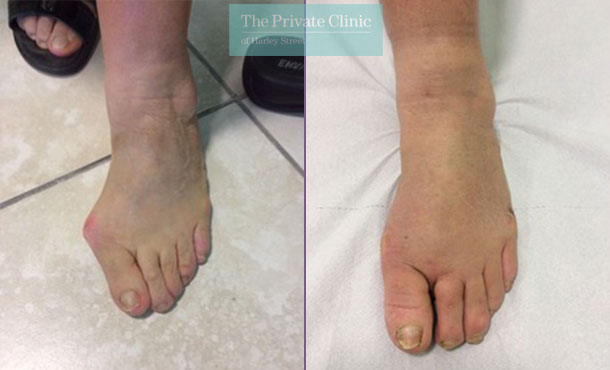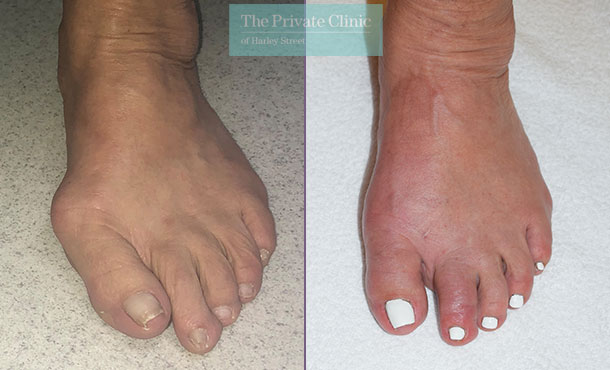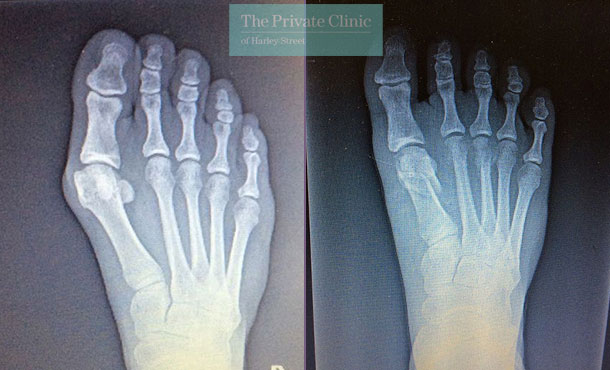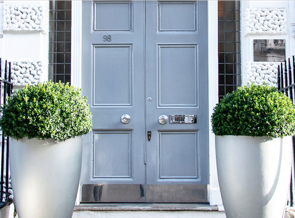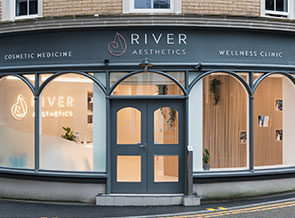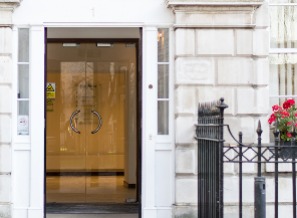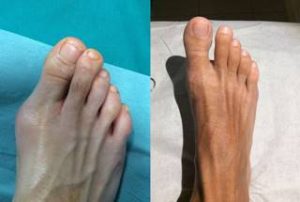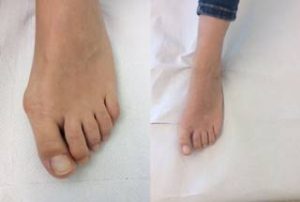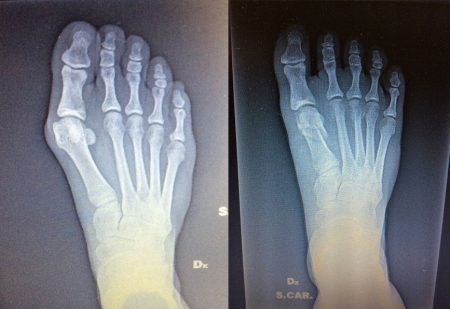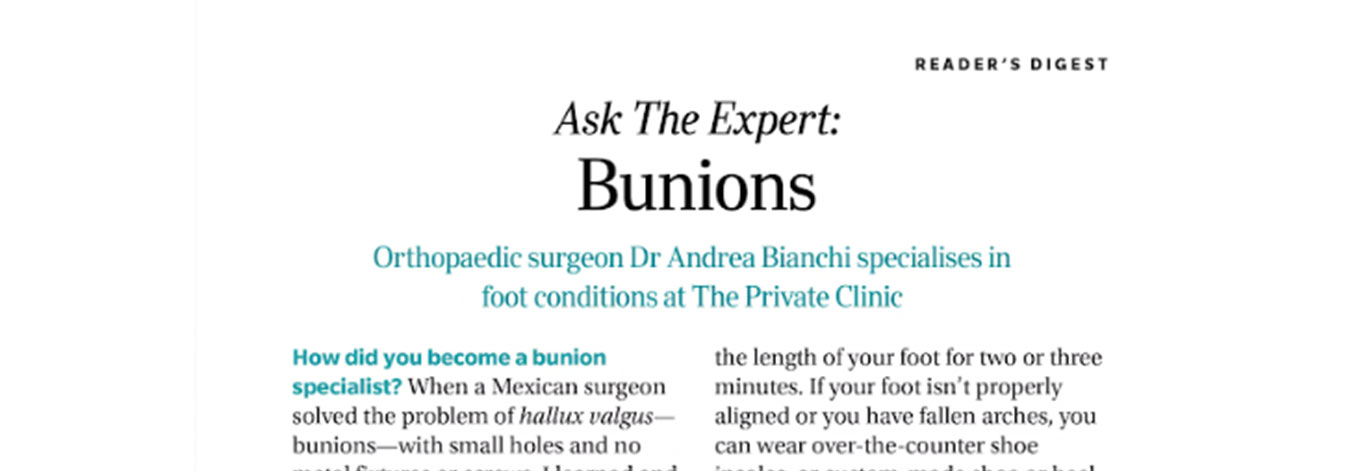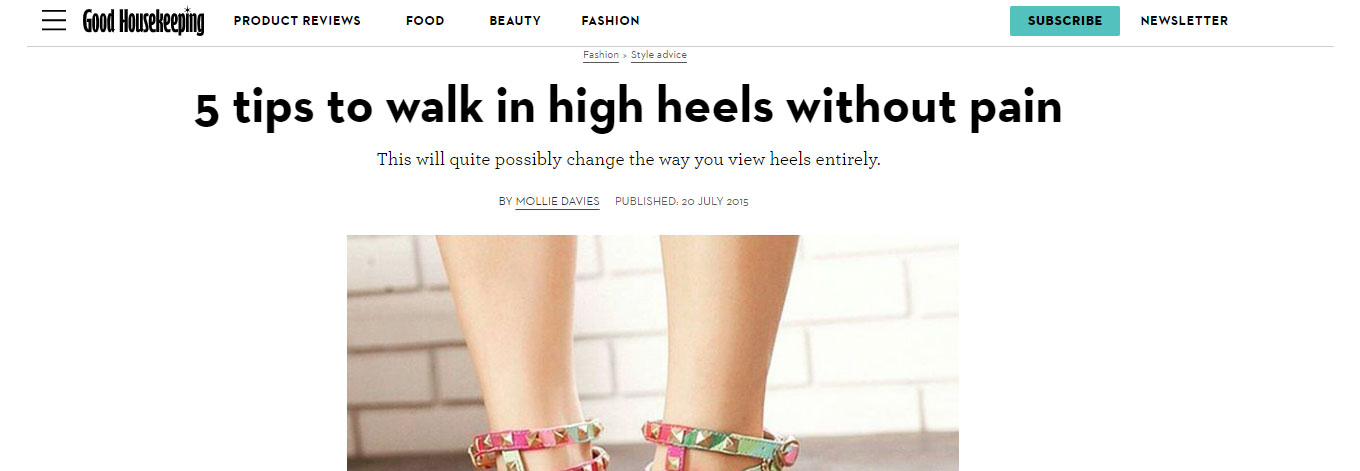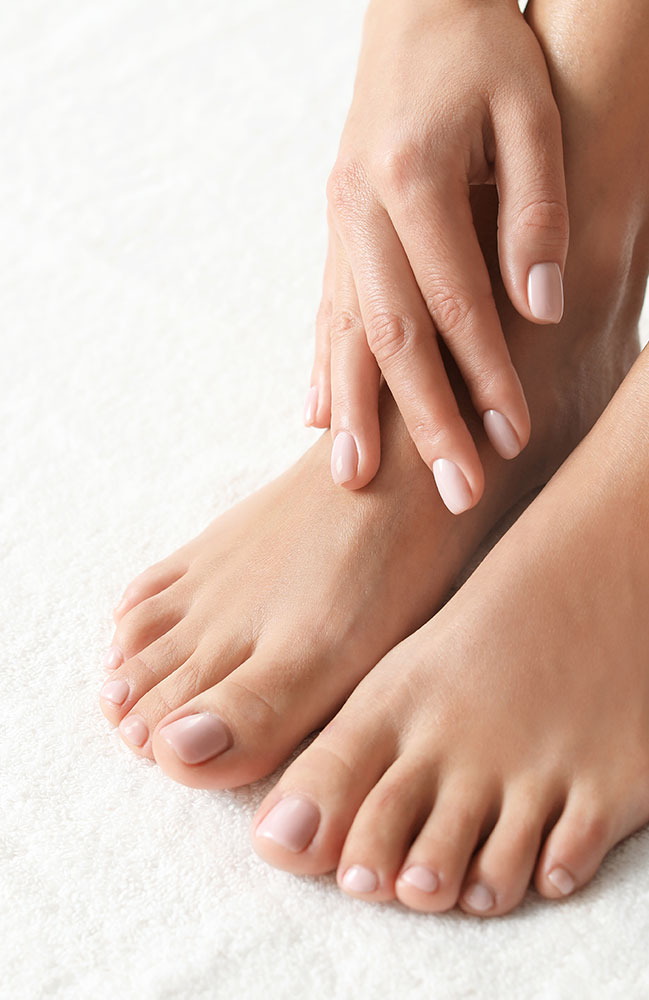
Minimally Invasive Bunion Surgery
At The Private Clinic, we know how debilitating bunions can be, impacting your mobility and quality of life. That’s why we offer a revolutionary minimally invasive bunion removal surgery—performed without metal fixtures, screws, or downtime.
Our exclusive keyhole procedure, developed by Consultant Orthopaedic Surgeon Mr Andrea Bianchi, is performed at our state-of-the-art, privately owned London Fitzroy Hospital. With over 15 years of experience and 1,200 procedures performed annually, Mr. Bianchi is recognised as a leading expert in bunion surgery and is praised by patients as a “magician” for delivering life-changing results. Book a consultation at our London Harley Street Bunion Clinic or Bournemouth Bunion Clinic to learn if you are suitable for bunion removal.

Why choose our Minimally Invasive Bunion Surgery?
Our exclusive technique offers:
- No Metal Fixtures or Screws: Avoiding plates, wires, and screws ensures a more comfortable and natural healing process.
- Immediate Mobility: Walk out of the clinic the same day without crutches for a quick recovery.
- Minimal Scarring: Tiny 2-3 mm incisions leave barely noticeable scars.
- Rapid Recovery: Minimal postoperative pain and a natural weight-bearing recovery process.
- High Success Rate: A 98% success rate for various bunion conditions, including Hallux Valgus and Tailor’s Bunions.
- Experienced Surgeon: Over 15 years of expertise and 1,200 procedures performed annually by Mr. Bianchi.
- Flexible Financing: Starting from £5,990, with 0% interest options to help you spread the cost of your procedure.
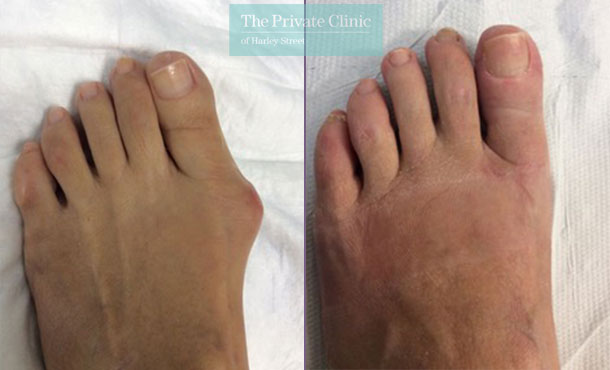
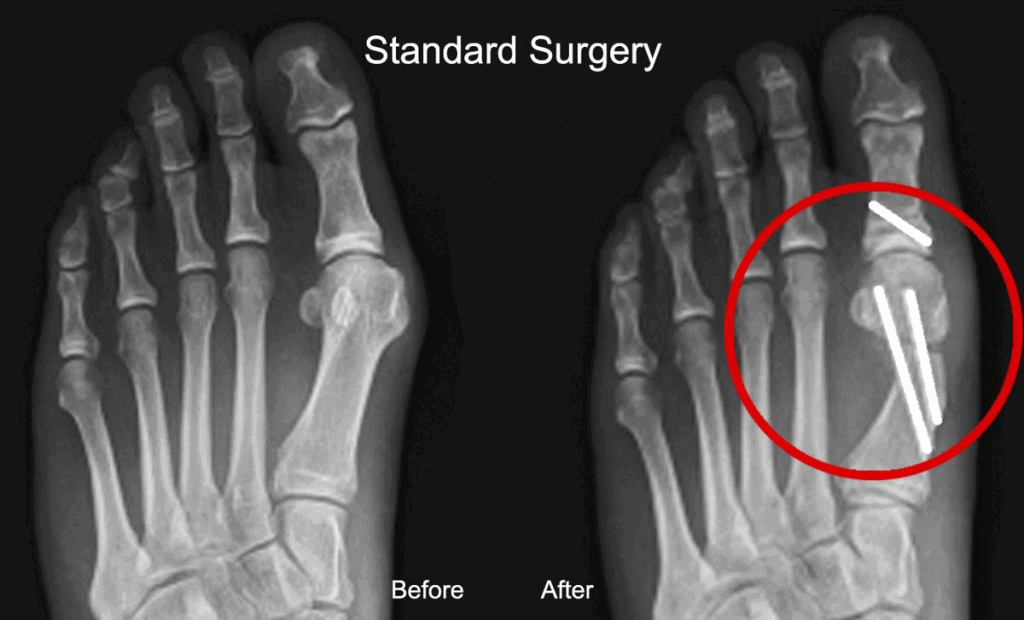
What Our Patients Say
I am so thrilled with Mr Bianchi and his team at The Private Clinic. The care was wonderful, and on surgery day, I was so well looked after. The results of my bunion surgery are incredible, and my only regret is not doing it sooner. Thank you
– Ciara
Very pleased with the results of my bunion removal. My foot returned to normal six weeks after surgery. Walking out of the hospital without crutches was a major benefit. The incisions were so small that I couldn’t even find them when changing the bandage.
– Peter
No pain during or after and walking normally straight away. My foot is perfectly straight and it’s impossible to see where the incision was made. Absolutely recommend, it’s quite incredible.
– Maria
Watch Karen’s Bunion Success Story
Your Surgical Journey
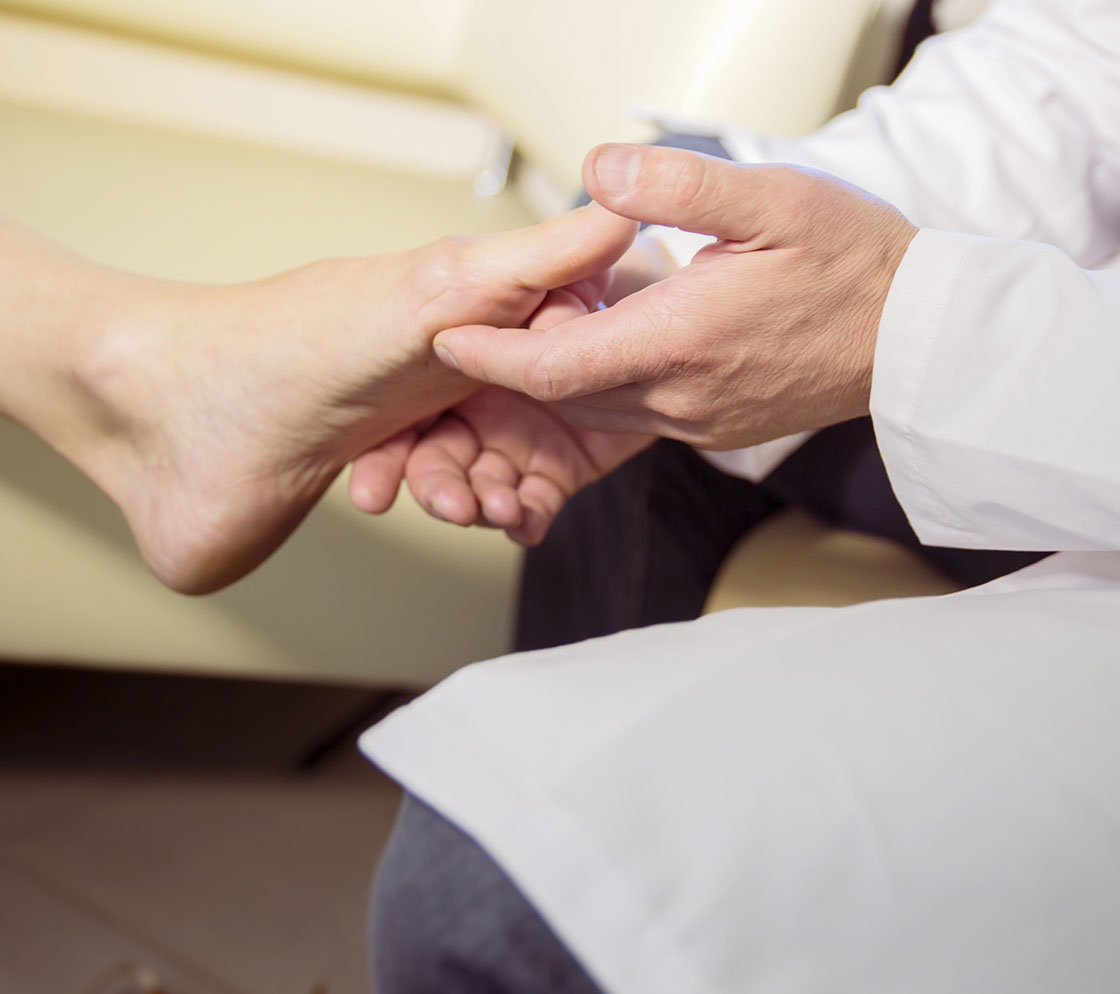
Consultation with Mr Andrea Bianchi
Your own bunion removal journey begins with an in-depth consultation with Orthopaedic Consultant Surgeon Mr Bianchi, where you’ll undergo X-rays to assess your suitability for surgery. Mr Bianchi will discuss your medical history, expectations, and the procedure details, giving you a chance to review before-and-after photos and ask any questions.
During your consultation, we will:
- Ensure you feel supported every step of the way
- Assess your goals and discuss the best options for you
- Provide clear, empathetic explanations of the procedures and outcomes
Pre-Operative Appointment
You’ll meet with one of our experienced nurses to review any precautions before surgery, complete required tests, and adjust medications if necessary.
Bunion Before & After Results
Take a look at our various galleries showcasing the amazing results achievable with our exclusive keyhole bunion removal surgery.
The Bunion Surgery Procedure
On the day of your procedure, you’ll experience our revolutionary, minimally invasive bunion removal technique at one of our state-of-the-art theatres.
- Vitals Check: Our team will record your vitals, and Mr Bianchi will prepare your foot for surgery.
- The Procedure: Under local anaesthesia, Mr Bianchi will use his pioneering minimally invasive technique to create tiny 2-3 mm incisions and use surgical burrs to correct the bunion. Radiological imaging will guide the procedure, ensuring precision—all without the need for screws, plates, or wires.
- Final Steps: Once the procedure is complete, your foot will be bandaged using a personalised technique to encourage natural healing. Most patients walk out of the clinic the same day, crutch-free.
Related: Find out more about why our exclusive procedure is unique.
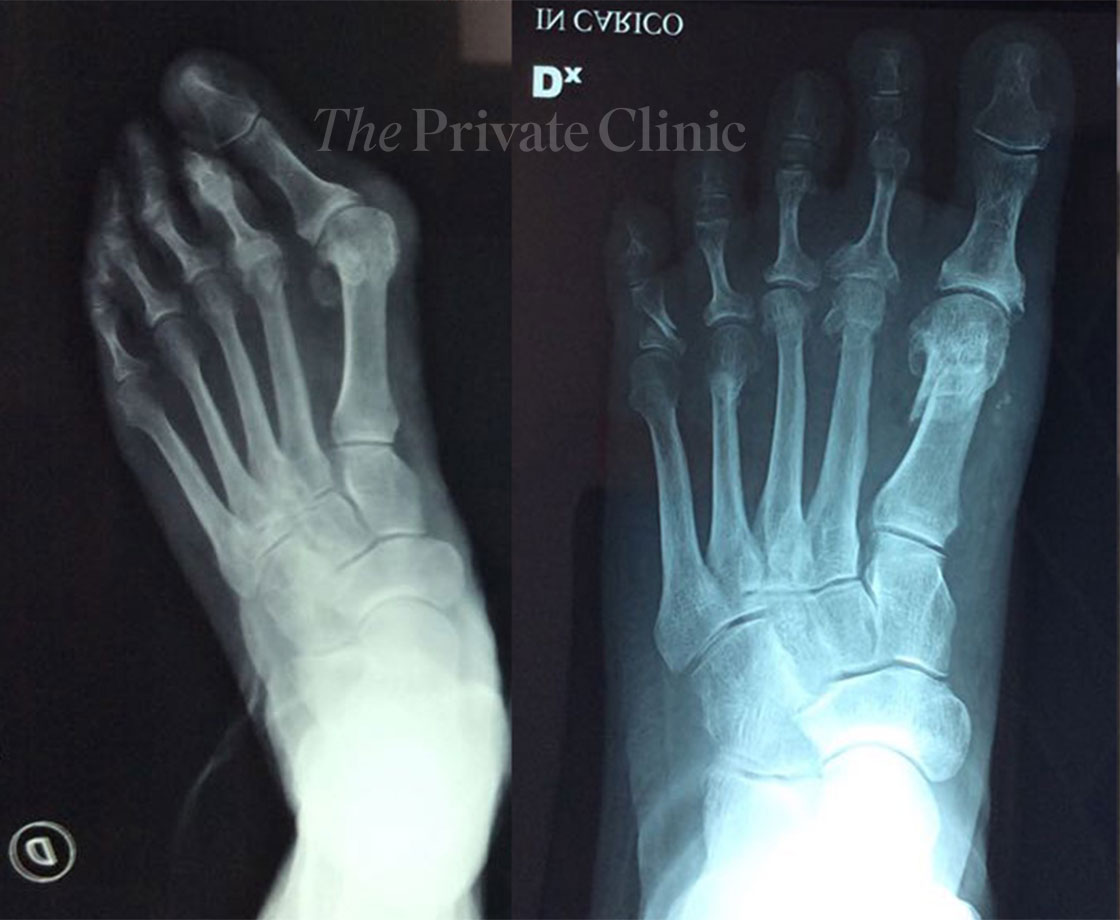
Bunion Surgery Recovery & Aftercare
Our comprehensive aftercare is one of the key reasons our patients consistently recommend us. From the moment your surgery is complete, our team provides ongoing support to ensure your recovery is seamless and comfortable; you’ll benefit from:
- A dedicated Patient Coordinator to guide you through your recovery with practical advice and emotional support.
- A follow-up call from a nurse the day after surgery to check on your progress.
- 24/7 access to our nursing team for any concerns, ensuring you always have expert support when you need it.
- Detailed post-surgery instructions and guidance on pain relief and any necessary physiotherapy to optimise your healing.
- Regular check-ups, including follow-up X-rays, to closely monitor your progress.
Our nurses maintain regular contact, both by phone and in-person, throughout your recovery journey. No concern is too small – we’re here 24/7 to ensure your peace of mind and a successful recovery.
As one delighted patient shared, “So pleased I chose The Private Clinic. Thank you to all the team for putting me at ease and for literally putting a positive spring in my step.”
Patient Stories
Outstanding care, patient satisfaction and results mean everything to The Private Clinic Team.
Read about our patients’ experiences to see what you can expect from our award-winning procedures.
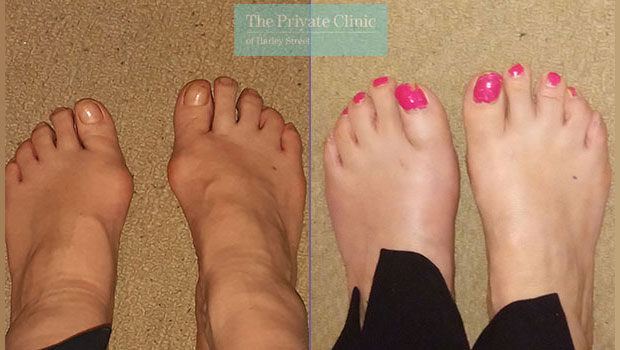
Minimally Invasive Bunion Surgery – Teresa
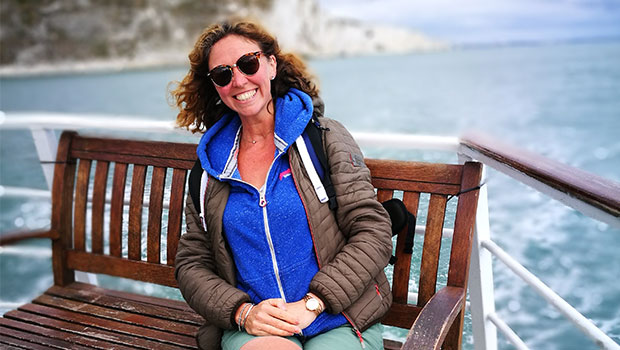
Minimally Invasive Bunion Surgery – Karen

Minimally Invasive Bunion Surgery – Michelle
Pricing and Financing Options
At The Private Clinic, Bunion Surgery costs start from £5,990 or as little as £136.28 per month.
This price includes the cost of the X-Ray required following your procedure. The cost of your second foot starts from £4,520
We offer flexible payment plans to help you spread the cost over manageable monthly payments, with 0% interest available.
The Private Clinic has collaborated with Chrysalis Finance to offer a variety of payment choices for our patients including:
12 – 60 months at 14.9% APR
6 months 0% Interest-free – APR
Included in this treatment
- Comprehensive post-operative aftercare courtesy of our specialist nurses and medical team.
- A pre-operative medical assessment to ensure you are fit for surgery.
- Your Bunion procedure will be carried out at our Private Hospital located on London’s Fitzroy Square.
- 24/7 on call nurse assistance.
- A dedicated Patient Co-ordinator, who will be your point of contact through your journey with us.
In the Press
Our pioneering technique has been recognised by prestigious publications for its innovation and outstanding results.
as seen in




Frequently Asked Questions
The Private Clinic has over 40 years of experience. Our expert team is ready to answer your questions and provide peace of mind. Below are some common FAQs about Bunions & Bunion Surgery. Rest assured, all questions will be addressed in detail during your consultation.
You will be required to wear an open surgical shoe/boot to stabilise the operation foot post-operatively. This will need to be worn until your main bandage is removed around day 25-30 following your procedure.
It is best to wear a shoe of the same/similar height as the untreated foot to maintain body alignment. An ‘Evenup shoe balancer’ can be purchased to assist with this. It can be placed over your normal shoe to provide alignment.
Yes, it is still important to rest your foot following this type of bunion surgery – especially during the first couple of weeks.
The foot can swell and the bandage will become tight and uncomfortable. Elevating the foot when you are sitting will help to alleviate this.
Whilst walking is also encouraged, we recommend listening to your body and not trying to do too much too soon.
Depending on the nature of their job role and their commute to work, most patients can return to work in the days following their procedure.
Patients can usually get back to exercise around 8 to 12 weeks following their procedure. Strenuous or high-impact activities can take a bit longer to return too and are best done gradually.
The Private Clinic has several clinics so we are sure to have a bunion clinic located near you.
Where can I get bunion treatment in London?
London – 98 Harley Street, W1G7HZ
Bunion treatment consultations in London are with our Orthopaedic Surgeon.
All bunion treatments are carried out at our boutique private London Hospital located on Fitzroy Square.
Where can I get bunion treatment in Manchester?
Manchester – 25 St John Street, M3 4DT
Consultations in Manchester are available with our Orthopaedic Surgeon.
Where can I get bunion treatment in Bournemouth?
Bournemouth – Unit 1, The Old Sorting Office, 5 Albert Rd, Bournemouth BH1 1AX –Dorset
Consultations in Bournemouth are available with our Orthopaedic Surgeon.
Where can I get bunion treatment in Birmingham?
Birmingham – 88 Hagley Road, B16 8LU – West Midlands
Consultations in Birmingham are available with our patient advisors.
Where can I get bunion treatment in Leeds?
Leeds – 45 Park Square North, LS1 2NP – Yorkshire
Consultations in Leeds are available with our patient advisors.
Where can I get bunion treatment in Northampton?
Northampton – 82 Billing Road, NN1 5DF – East Midlands
Consultations in Northampton are available with our patient advisors.
Our Clinics
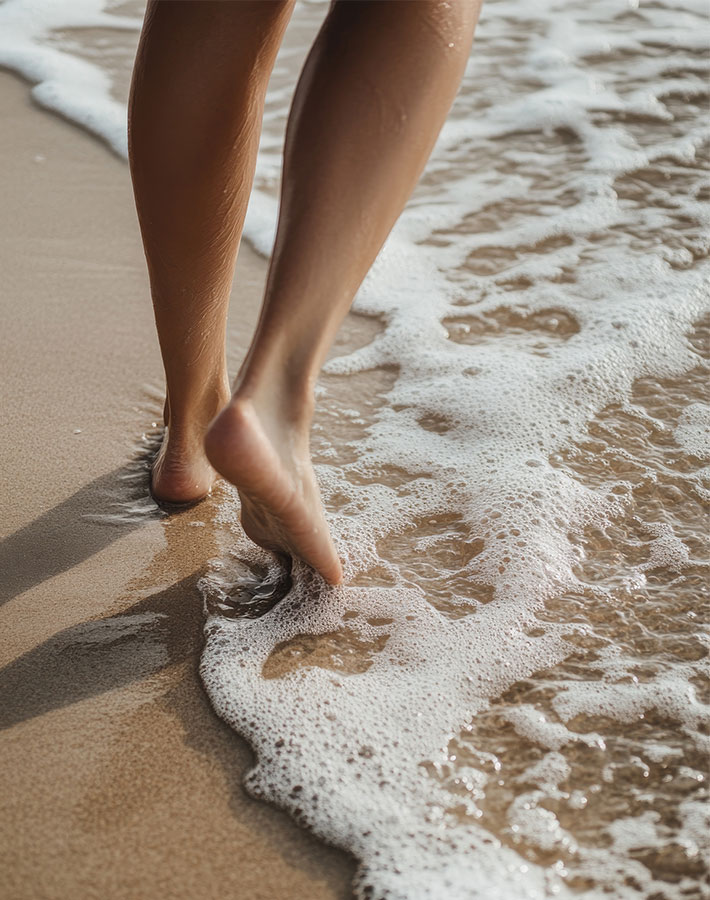
Ready for a life without bunion pain?
Like many of our patients, you can return to doing the things you love, pain-free and with confidence. As our patient, Pippa says, “If you are putting up with pain thinking it’s too much of an operation or too long a healing process, think again—you really don’t need to spend the rest of your life with deformed, painful feet. Mr. Bianchi can help you!”
Ready to reclaim your mobility and confidence? Contact us today to schedule a consultation with Mr. Andrea Bianchi. Like many of our patients, you’ll be walking pain-free and crutch-free sooner than you think.





